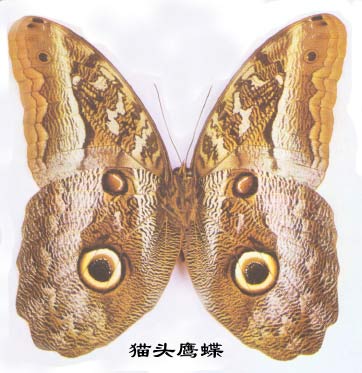Another type of protective coloration is to use patterns to attract the attention of predators, thereby avoiding damage to fatal parts. Eyespots, the pattern found on the wings of most butterflies, are perhaps the best example of this coloration. Eyespots are most common in the families Oculidae, Morphocidae, and Cyclopteridae. These eye-like markings can be simple; for example, the "eye" of many eye butterflies consists of a black round spot with only a thin white line around the edge. Some eye spots are strikingly similar to the eyes of vertebrates, which are the so-called owl butterflies.

There has been much discussion about the survival value of eye spots. The rows of eyespots present on the underside of the wings of Morphoids may be destructive markings. However, most eye spots are considered to be defensive "target areas" that can attract predators such as birds to capture them. Even if they are damaged, they will not endanger the butterfly's life, and some can still move normally. In many species of the family Lycosidae, the eyespot combines with structural features to form a "false head" at the inner corner of the hind wing. A small tail process often extends from this part of the wing. When these butterflies are perched, their wings are closed and rubbed, causing the tail process to vibrate, as if the antennae on the head are moving.
animal tags:
We created this article in conjunction with AI technology, then made sure it was fact-checked and edited by a Animals Top editor.